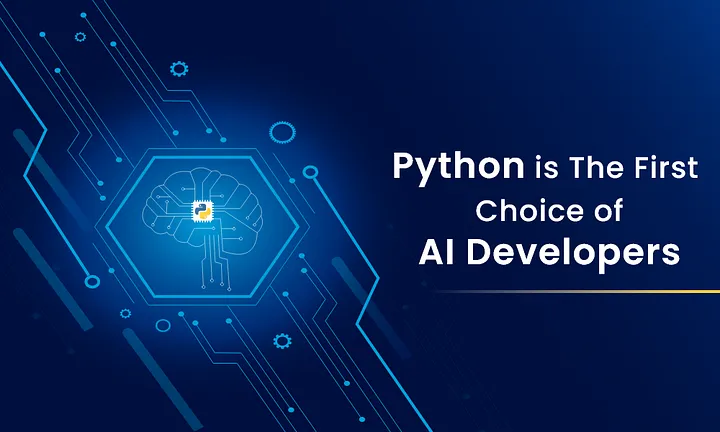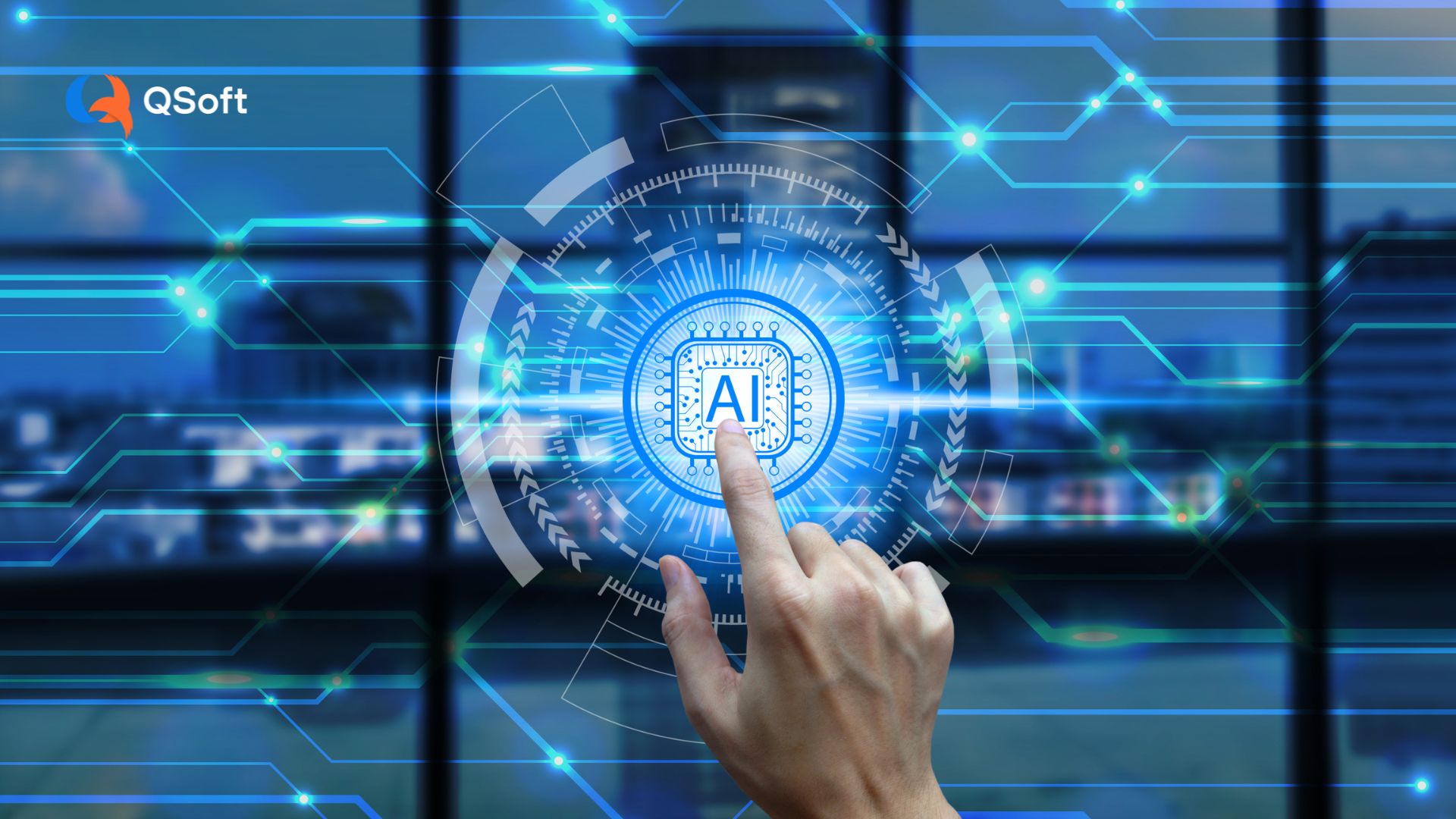Harnessing Generative AI for Software Development: Key Technologies
The evolution of Generative AI is revolutionizing software development, offering tools that boost productivity, creativity, and efficiency. From automating code generation to refining debugging processes, AI-powered technologies are transforming how developers work. With the rise of machine learning models, deep learning algorithms, and natural language processing, developers are now able to focus on innovation while AI handles repetitive tasks.
In this blog, we’ll explore how Generative AI is reshaping software development and introduce key tools and technologies that are driving this transformation. You’ll learn about the essential role of Python, the power of Large Language Models (LLMs) like GPT-4, and the visual creativity unlocked by the DALL-E API. Additionally, we’ll discuss the importance of design patterns in AI-driven projects, ensuring scalable and flexible systems for the future.
The Rise of Generative AI in Software Development
Generative AI is rapidly becoming a game changer in software development, enabling developers to meet the growing demand for faster, more efficient project completion. According to recent studies, the global AI market is expected at USD 196.63 billion in 2023 and is projected to grow at a CAGR of 36.6% from 2024 to 2030, with AI in software development leading much of that growth.
One of the most impactful innovations in this field is the use of Large Language Models (LLMs), such as GPT-4, to generate code, assist with debugging, and even suggest improvements to existing software. These AI tools empower developers to shift their focus from mundane, repetitive tasks to high-level problem-solving, ultimately improving productivity by up to 40%, according to industry reports.
Essential Technologies for AI-Driven Development
To truly harness the power of Generative AI in software development, it’s crucial to adopt the right tools and technologies. Let’s dive into the key technologies and their real-world applications that are reshaping the software development landscape.
1. Python: The Backbone of AI Development
Why It’s Important:
Python has firmly established itself as the go-to programming language for AI development due to its simplicity, versatility, and the richness of its libraries. Whether you’re building neural networks, conducting data analysis, or working with machine learning models, Python offers a clean syntax that allows developers to write less code while achieving more. Its extensive ecosystem—featuring libraries like TensorFlow, PyTorch, scikit-learn, and Keras—provides everything needed to build and deploy AI applications.
Python’s ease of use makes it an ideal language for developers at all levels of expertise. Its broad community support ensures that troubleshooting, finding resources, and integrating new AI technologies are seamless processes. Additionally, Python’s compatibility with other programming languages and platforms makes it a preferred choice in both research and industrial AI applications.
Real-World Use Case:
- QSoft utilized Python extensively in its AI-Driven Predictive Maintenance for Manufacturing project. The project involved creating custom AI models using Python’s versatile libraries like TensorFlow and scikit-learn. By integrating predictive analytics and real-time monitoring, QSoft helped reduce equipment downtime by 40%, significantly enhancing operational efficiency.
Stat to Consider:
According to Stack Overflow’s 2023 Developer Survey, over 48% of developers use Python, making it the most popular programming language in AI and machine learning development.

2. SQLAlchemy: Streamlining Database Operations
Why It’s Important:
SQLAlchemy is a powerful Object-Relational Mapping (ORM) library that bridges the gap between Python and SQL-based databases. In AI-driven software development, handling large datasets efficiently is critical. SQLAlchemy abstracts the complexity of database queries by allowing developers to interact with databases through Python objects, rather than raw SQL queries. This simplifies database operations, makes code more maintainable, and ensures the smooth integration of AI models with databases.
In AI applications, SQLAlchemy is especially useful for managing and manipulating large amounts of structured data, which can then be fed into machine learning models for training and predictions. Its support for multiple database backends—like PostgreSQL, MySQL, and SQLite—makes it highly versatile for AI projects of all sizes.
Real-World Use Case:
- Financial Data Analysis: In the AI-Powered Fintech Solution for Fraud Detection project, QSoft employed SQLAlchemy to manage vast transactional datasets efficiently. SQLAlchemy’s ORM capabilities allowed the team to interact with databases seamlessly, feeding critical transactional data into machine learning algorithms to detect fraud in real-time. This resulted in a 45% reduction in fraudulent activities, safeguarding the platform from financial risks.
- Healthcare Systems: Hospitals and clinics using AI to predict patient outcomes rely on SQLAlchemy to handle electronic health records (EHR) stored in databases. It enables seamless data flow between the database and the AI models predicting patient recovery rates or treatment efficacy.
3. SQLite: Lightweight Database for Prototyping
Why It’s Important:
SQLite is a serverless, self-contained database engine that is perfect for small-scale applications or early-stage prototyping in AI development. Unlike heavier databases like PostgreSQL or MySQL, SQLite is lightweight, requiring minimal setup and no external server dependencies. This makes it particularly useful in AI-driven development where quick prototyping is essential.
SQLite’s simplicity and low overhead make it an excellent choice for developers building AI-powered mobile apps, Internet of Things (IoT) systems, or any project where data storage needs are moderate. It’s frequently used to store local data on devices, which can then be processed by AI models for real-time analysis or predictions.
Real-World Use Case:
- AI-Powered IoT Devices: In the Overcoming Logistics Challenges with Advanced IoT and AI Solutions project, QSoft used SQLite to prototype real-time tracking features for a logistics company. The lightweight, serverless nature of SQLite made it perfect for developing early versions of an IoT-based tracking system before scaling to a full-fledged cloud solution. This system handled sensor data to monitor package locations across multiple countries in real time, improving operational efficiency and cutting manual tracking errors by 40% .
- Mobile Apps: Many AI-powered mobile applications use SQLite to store local data, such as user preferences or cached machine learning results. For instance, a fitness app that tracks user activity might use AI to recommend personalized workout plans and store the data locally with SQLite for quick access.
4. JSON and Pickle: Data Serialization and Configuration Management
Why It’s Important:
In AI-driven development, data serialization is essential for saving and sharing the current state of AI models, data configurations, and other components. JSON (JavaScript Object Notation) and Pickle are two widely used serialization formats that play crucial roles in configuration management and data handling for AI projects.
- JSON is a lightweight format used primarily for configuration files and API communication. It’s particularly useful in defining model hyperparameters, input/output formats, and various settings required for machine learning models.
- Pickle is more suited for serializing complex Python objects, including AI models and datasets. By using Pickle, developers can save trained models and load them later for further testing, modification, or deployment.
Real-World Use Case:
- AI Model Deployment: In e-commerce, AI models trained to recommend products based on customer behavior are serialized using Pickle. These models are then deployed into production, where they are loaded and used for real-time recommendations, offering a personalized shopping experience.
- Configuration Management in AI Applications: JSON is commonly used to define model configurations, such as hyperparameters, input formats, and output requirements. For instance, an AI-powered image processing app might store its model configurations in a JSON file, enabling developers to easily adjust settings without modifying the codebase.
5. DALL-E API: Pushing Boundaries with AI-Generated Imagery
Why It’s Important:
The DALL-E API represents a cutting-edge advancement in Generative AI, allowing developers to create high-quality images from text descriptions. By combining AI and creativity, DALL-E pushes the boundaries of what’s possible in fields like marketing, game development, and design. For developers working on projects that require custom imagery, DALL-E opens up a world of possibilities for automating creative processes.
Whether you’re developing an app that requires dynamic imagery or working on digital content creation, DALL-E enables developers to generate visuals that match their specific needs. The API is capable of producing images in various styles and for different purposes, making it a powerful tool in AI-driven design.
Real-World Use Case:
- UI/UX Design: Web and mobile app designers use the DALL-E API to generate mockups and UI elements based on textual descriptions provided by designers. This accelerates the design process by creating multiple visual variations, giving designers more creative freedom and reducing the time required to manually create designs.
- Creative Content Generation: E-commerce platforms can integrate DALL-E to automatically generate product images based on product descriptions, saving time and costs associated with traditional photoshoots.
6. Large Language Models (LLMs) like GPT-4: Code Generation and Problem-Solving
Why It’s Important:
Large Language Models (LLMs), such as GPT-4, are game changers in the world of software development. These models, trained on vast datasets, understand natural language and can generate code snippets, solve complex coding challenges, and even suggest optimizations for existing software. LLMs enable developers to automate repetitive tasks like code refactoring, documentation generation, and debugging, freeing up time for more creative and strategic work.
GPT-4 and similar models have the ability to “understand” context, making them ideal for use in environments where developers need quick, accurate, and contextually relevant solutions. They can also assist in accelerating software development by generating code based on natural language inputs, dramatically reducing the time required for certain tasks.
Real-World Use Case:
- Automated Code Generation: GPT-4 is used in a variety of industries to automate routine coding tasks. For example, developers in the finance industry use GPT-4 to generate scripts that automate data processing and reporting tasks, reducing the time spent writing code by as much as 40%.
- Debugging Assistance: When integrated into development environments, LLMs can analyze code, identify errors, and suggest fixes. For instance, GPT-4 can help developers debug issues related to memory leaks, optimize performance bottlenecks, or even suggest best practices in security.
7. Design Patterns: Singleton, Factory, Strategy, and More
Why It’s Important:
Design patterns, such as Singleton, Factory, and Strategy, provide well-tested solutions to common problems in software architecture. By incorporating these patterns into AI-driven development, developers can build systems that are more modular, maintainable, and scalable. These patterns are especially useful when working with AI-powered coding tools, allowing developers to efficiently manage the complexity of AI models and algorithms.
Real-World Use Cases:
- Singleton Pattern: In AI-driven systems, the Singleton Pattern is used to manage shared resources such as database connections or machine learning models. For example, an AI-powered recommendation system might use a single instance of a model to handle all user queries, ensuring consistency and reducing memory overhead.
- Factory Pattern: In AI applications, the Factory Pattern allows for the dynamic creation of objects based on specific conditions. For instance, an AI-driven chatbot could use this pattern to create different conversation strategies (like greeting, product inquiry, or support) depending on the user’s input.
- Strategy Pattern: This pattern allows developers to switch between different algorithms or AI models at runtime. A Strategy Pattern could be used in a Generative AI platform that generates different types of content—such as text or images—based on user preferences or specific use cases.
Conclusion
The tech stacks driving AI-powered software development—from Python to DALL-E API—are essential tools that empower developers to harness the full potential of Generative AI. By integrating these technologies into your workflow, you can automate repetitive tasks, accelerate development, and unlock new creative possibilities. Whether you’re generating code with LLMs like GPT-4, streamlining database operations with SQLAlchemy, or using DALL-E for image generation, the future of software development lies in the synergy between AI and these powerful tech stacks.
How are you incorporating AI into your software development process? Share your thoughts and experiences in the comments below. Ready to explore more? Check out our in-depth tutorials on Python, GPT-4, and SQLAlchemy to kickstart your AI-driven projects!

